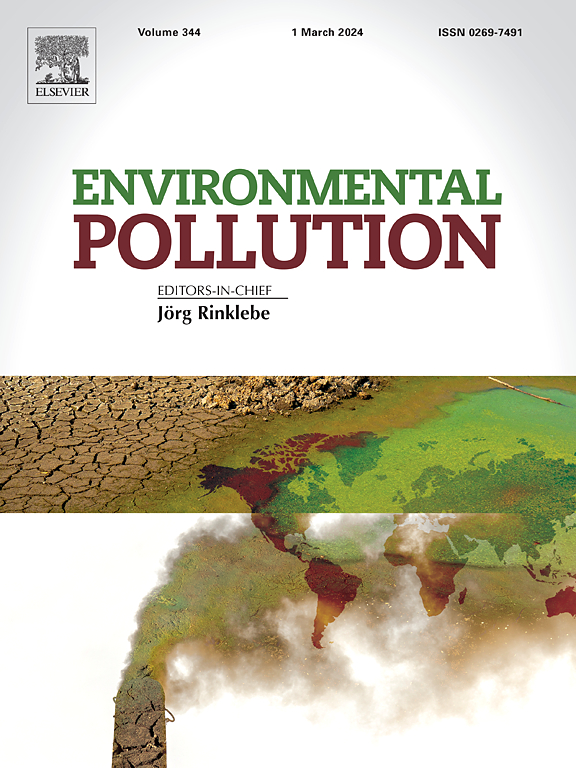Prediction of the exposure profile of bisphenol A in Chinese population by physiologically-based pharmacokinetics modeling
IF 7.6
2区 环境科学与生态学
Q1 ENVIRONMENTAL SCIENCES
引用次数: 0
Abstract
Bisphenol A (BPA) has emerged as a typical contaminant which can induce various adverse effects on human health and environment. BPA exposure and the corresponding human responses vary across different regions and populations. China is one of the largest producers and consumers of BPA, but the exposure profile of BPA in Chinese population is poorly understood. Physiologically-based pharmacokinetic (PBPK) models are emerging as useful tools to predict the internal exposure profiles of chemicals. Herein, the present study was aimed to predict the exposure profile of BPA in Chinese population by PBPK modeling using external BPA exposure data. A PBPK model specific for oral BPA exposure in Chinese population was established using interspecies and route-to-route extrapolations using pharmacokinetic data from intravenous BPA exposure studies in monkeys. This model was refined and validated using the data concerning BPA physicochemical properties and pharmacokinetic (absorption, distribution, metabolism, and excretion) data from existing literatures. Afterward, this model was applied to simulate the internal exposure profile of BPA in Chinese population by integrating external exposure data from the Fifth China Total Diet Survey with physiological parameters specific to Chinese population. Parameter sensitivity and modeling uncertainty were analyzed. Based on the simulated BPA internal profile, human equivalent dose factors (HEDF) were calculated. Our results provide an important basis for assessment of the potential risk of BPA exposure in Chinese population and an essential reference for determination of the safe margin limits for BPA in China.


求助全文
约1分钟内获得全文
求助全文
来源期刊

Environmental Pollution
环境科学-环境科学
CiteScore
16.00
自引率
6.70%
发文量
2082
审稿时长
2.9 months
期刊介绍:
Environmental Pollution is an international peer-reviewed journal that publishes high-quality research papers and review articles covering all aspects of environmental pollution and its impacts on ecosystems and human health.
Subject areas include, but are not limited to:
• Sources and occurrences of pollutants that are clearly defined and measured in environmental compartments, food and food-related items, and human bodies;
• Interlinks between contaminant exposure and biological, ecological, and human health effects, including those of climate change;
• Contaminants of emerging concerns (including but not limited to antibiotic resistant microorganisms or genes, microplastics/nanoplastics, electronic wastes, light, and noise) and/or their biological, ecological, or human health effects;
• Laboratory and field studies on the remediation/mitigation of environmental pollution via new techniques and with clear links to biological, ecological, or human health effects;
• Modeling of pollution processes, patterns, or trends that is of clear environmental and/or human health interest;
• New techniques that measure and examine environmental occurrences, transport, behavior, and effects of pollutants within the environment or the laboratory, provided that they can be clearly used to address problems within regional or global environmental compartments.
 求助内容:
求助内容: 应助结果提醒方式:
应助结果提醒方式:


